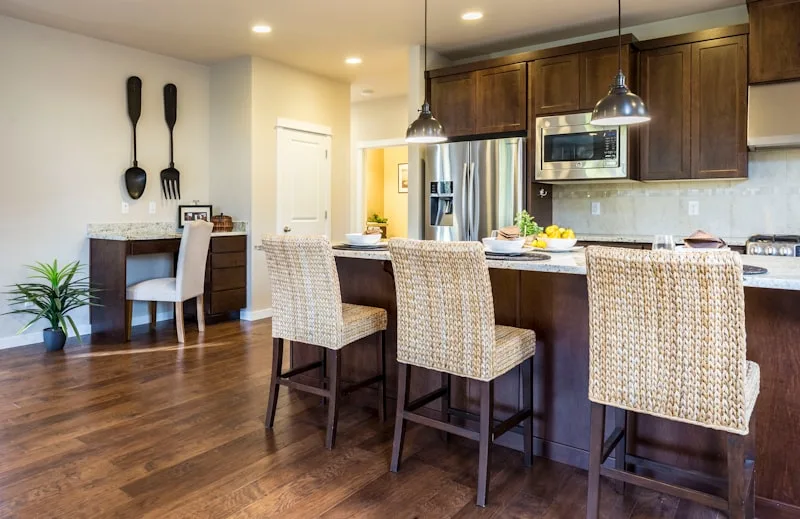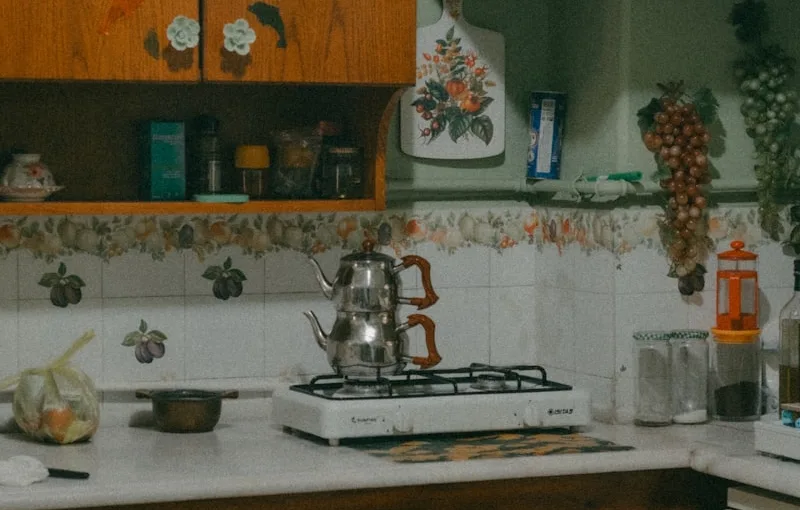Drywall screws are designed for, you guessed it, drywall! They’re lightweight and perfect for attaching sheets of gypsum to wooden or metal studs. But when it comes to the heavy lifting of kitchen cabinets, they simply don’t cut it. Imagine hanging a heavy coat on a flimsy hook; it’s bound to come crashing down, right? That’s exactly what can happen with drywall screws. They lack the strength and grip needed to support the weight of cabinets filled with dishes, pots, and pans.
Moreover, drywall screws can easily strip out when you’re trying to secure them into the wood of your cabinets. This can lead to a wobbly installation that’s not just unsightly but also unsafe. You wouldn’t want your beautiful new cabinets to come crashing down while you’re reaching for that favorite frying pan, would you?

Instead, opt for cabinet screws or wood screws, which are specifically designed for this purpose. They have a thicker shaft and a sharper point, allowing them to bite into the wood and hold tight. Think of them as the sturdy anchors that keep your ship steady in a storm.
So, next time you’re gearing up for a kitchen remodel, remember: using the right screws is crucial for a secure and lasting installation. Your cabinets deserve the best, and so do you!
The Hidden Dangers: Why Drywall Screws Aren’t the Best Choice for Kitchen Cabinets
First off, drywall screws are designed for, you guessed it, drywall! They’re not built to handle the weight and stress that kitchen cabinets endure. Imagine trying to hold up a heavy painting with a flimsy thumbtack—it just doesn’t make sense! Kitchen cabinets can be loaded with dishes, pots, and pans, and drywall screws simply don’t have the strength to support that kind of weight over time.

Moreover, drywall screws can strip out easily, especially when you’re driving them into harder materials like wood or metal. Picture this: you’re all set to hang your beautiful new cabinets, and suddenly, the screw just spins in place, leaving you frustrated and your cabinets dangling precariously. Not exactly the dream kitchen scenario you envisioned, right?
Another thing to consider is the potential for moisture damage. Kitchens are often steamy environments, and drywall screws can corrode when exposed to humidity. This corrosion can weaken the screws, leading to a catastrophic failure down the line. It’s like building a sandcastle at the beach—eventually, the waves will wash it away!
So, what’s the alternative? Well, using cabinet screws or lag bolts specifically designed for this purpose can save you a world of trouble. They provide the strength and durability needed to keep your cabinets securely in place, ensuring your kitchen remains both functional and beautiful. Why risk it with drywall screws when you can choose a safer, more reliable option?
Mounting Kitchen Cabinets: The Case Against Drywall Screws
First off, think about the weight of your cabinets. They’re not just decorative; they’re going to hold heavy dishes, pots, and pans. Drywall screws are designed for, well, drywall! They don’t have the strength to support the weight of a fully loaded cabinet. Imagine trying to hang a heavy painting with a flimsy thumbtack—it’s just not going to cut it.
Moreover, drywall screws can easily strip out of the wall, especially if you’re mounting your cabinets on a stud. When that happens, you’re left with a wobbly cabinet that could come crashing down at any moment. Yikes! Instead, consider using lag bolts or cabinet screws, which are specifically designed for this kind of heavy lifting. They provide a much more secure hold, ensuring your cabinets stay put, no matter how many times you open and close them.
Another thing to think about is the potential for damage. If you use drywall screws and they fail, you could end up with a hole in your wall that’s not only unsightly but also costly to repair. It’s like trying to fix a leaky faucet with duct tape—temporary and messy!
Secure Your Kitchen: Alternatives to Drywall Screws for Cabinet Installation
First up, consider using cabinet screws. These bad boys are specifically designed for the job. They’re thicker and have a sharper point, which means they bite into the wood better than standard drywall screws. Plus, they often come with a special coating to resist rust, ensuring your cabinets stay put for years to come.
Another fantastic option is pocket hole screws. If you’ve ever seen a well-crafted piece of furniture, chances are pocket holes were involved. This method involves drilling angled holes that allow screws to be hidden from view, giving your cabinets a clean, professional look. It’s like wearing a stylish outfit with a hidden pocket for your essentials—practical and sleek!
If you’re feeling adventurous, try using brackets or L-brackets. These metal supports can provide extra stability, especially for heavier cabinets. Think of them as the trusty sidekick in your kitchen renovation saga, always there to lend a hand when things get a bit wobbly.
Lastly, don’t overlook the power of adhesive. High-strength construction adhesive can be a game-changer, especially when combined with screws. It’s like the glue that holds your favorite childhood toy together—strong and dependable.
Drywall Screws vs. Cabinet Screws: What Every Homeowner Should Know
Drywall screws are like the trusty sidekick in your toolbox. They’re designed specifically for hanging drywall, featuring a sharp point that easily pierces through the board and into the studs behind it. Think of them as the fast and efficient delivery drivers of the construction world—quickly getting the job done without fuss. Their coarse threads grip the drywall tightly, ensuring it stays put. But here’s the catch: they’re not meant for heavy loads. If you try to use them for cabinets, you might end up with a disaster on your hands.
On the flip side, cabinet screws are the heavyweights in this showdown. These screws are built to handle the weight of your kitchen essentials, from pots and pans to that fancy stand mixer you just had to have. They’re thicker and often come with a flat or pan head, which provides a solid surface for securing your cabinets. Imagine them as the sturdy anchors of your kitchen—holding everything in place and ensuring your cabinets don’t sag or wobble.
So, when you’re gearing up for your next DIY project, remember: using the right screw is like choosing the right tool for the job. It can make all the difference between a job well done and a project that falls apart. Whether you’re hanging drywall or installing cabinets, knowing the difference between drywall screws and cabinet screws is essential for every homeowner.
The Cost of Convenience: Why Using Drywall Screws Could Cost You More in the Long Run
Using drywall screws might save you time initially, but let’s dig a little deeper. These screws can strip out easily, especially if you’re not careful. Imagine trying to hang a beautiful piece of art only to find it crashing down because the screws couldn’t hold up. That’s not just a headache; it’s a costly repair. You might end up spending more on replacements and repairs than if you had invested in better fastening options from the start.
Moreover, drywall screws can lead to more significant issues down the line. If they’re not installed correctly, they can create weak points in your walls. Think of it like building a house of cards—one wrong move, and the whole thing comes tumbling down. Over time, these weak points can lead to cracks, which means more patching, more paint, and more money out of your pocket.
Frequently Asked Questions
What Type of Screws Should Be Used for Mounting Kitchen Cabinets?
For mounting kitchen cabinets, use #8 or #10 wood screws that are 2.5 to 3 inches long. These screws provide strong support and stability. Ensure they are suitable for the cabinet material and the wall type to ensure a secure installation.
Can Using Drywall Screws Affect the Stability of Kitchen Cabinets?
Using drywall screws for kitchen cabinets can compromise their stability. These screws are not designed to support heavy loads and may not provide the necessary grip in the cabinet material. For optimal stability and safety, it is recommended to use screws specifically designed for cabinetry, which offer better strength and durability.
Why Are Drywall Screws Not Recommended for Kitchen Cabinets?
Using drywall screws for kitchen cabinets is not advisable because they are not designed to withstand the weight and stress of cabinetry. Drywall screws can strip easily and may not provide the necessary support for heavy items, leading to potential sagging or failure. Instead, use screws specifically designed for cabinetry to ensure durability and stability.
How Do Drywall Screws Compare to Cabinet Screws in Strength?
Drywall screws are designed for fastening drywall to wooden or metal studs, providing adequate strength for this purpose. However, cabinet screws are specifically engineered for securing cabinets and heavier furniture, offering superior holding power and resistance to stripping. While both types serve distinct functions, cabinet screws generally provide greater strength and durability for load-bearing applications.
What Are the Risks of Using Drywall Screws for Cabinet Installation?
Using drywall screws for cabinet installation can lead to several risks, including inadequate support for heavy loads, potential for stripping or breaking under stress, and lack of corrosion resistance. These screws are not designed for the weight and structural demands of cabinets, which may result in sagging, misalignment, or even failure of the installation over time.
